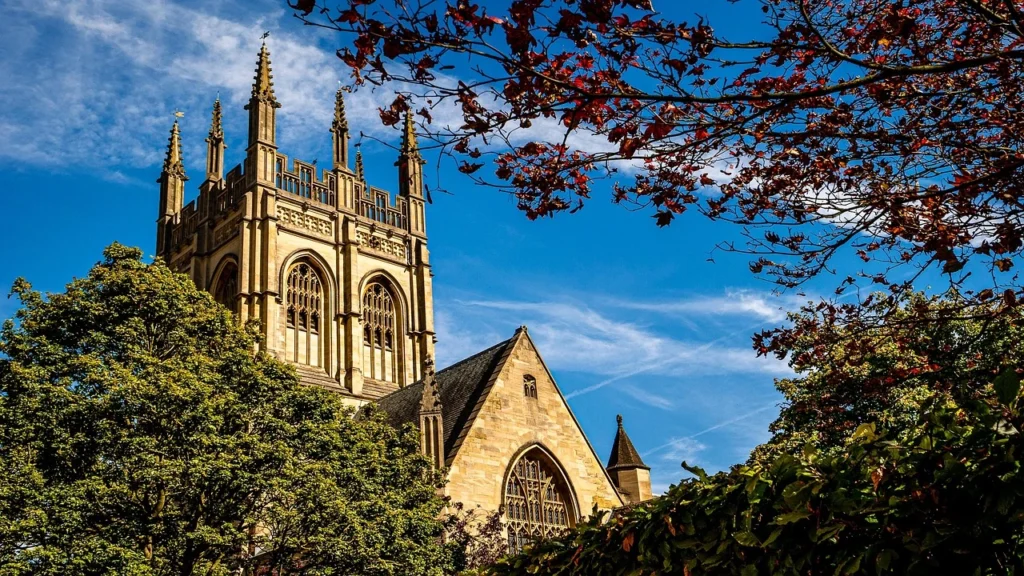Oxford University Facts & Figures
Introduction
Oxford University, one of the oldest and most prestigious institutions in the world, attracts top minds from nearly every country. But just how many students actually attend Oxford each year? Understanding the university’s student population offers a clear picture of its scale, diversity, and global academic strength. In this guide, we’ll explore the latest official data from the 2024–2025 academic year, covering total enrollment numbers, demographics, course breakdowns, college populations, and more.
Total Student Population (2024–2025)
As of the 2024–2025 academic year, Oxford University has approximately 26,000 students enrolled. This number includes both undergraduate and postgraduate students across a range of disciplines.
- Total students: ~26,500
- Undergraduate students: ~12,500
- Postgraduate students: ~14,000
- Undergraduates: Around 12,500
- Postgraduates: Around 13,500
- International Students: Over 45% of the total
These figures include both full-time and part-time students across all 39 Oxford colleges, reflecting Oxford’s commitment to diversity and academic excellence through a large, international, and dynamic student body.

Yearly Trends in Student Growth
Oxford’s student population has steadily increased over the past 10 years:
- 2014: ~23,000
- 2019: ~24,500
- 2024: ~26,500
This growth is attributed to expanded international recruitment, new graduate programs, and investments in research.
International Students at Oxford
Oxford is a truly global university. Here’s the international student distribution:
- Total international students: Over 10,800
- Countries represented: More than 160
- International students: Around 45% of the total population
- Top countries: USA, China, India, Germany, Singapore
- Support for international students: Dedicated visa advice, scholarships, international orientation programs, and more
Oxford welcomes students from every continent, with strong representation from India, China, the US, Germany, and Canada.
Undergraduate Students at Oxford
Undergraduate students typically pursue a three or four-year degree. Oxford offers around 53 undergraduate courses, and every year, it receives over 24,000 undergraduate applications.
Current undergraduate stats:
- Total enrolled: ~12,500
- New admissions (annually): ~3,300
- International undergraduates: Around 21%
- Top subjects: Medicine, Law, PPE (Philosophy, Politics and Economics), Computer Science, and Mathematics
Oxford maintains a competitive acceptance rate — roughly 17% — which reflects its high academic standards.
Postgraduate Students at Oxford
Oxford has a slightly larger postgraduate population than undergraduate. Students pursue taught master’s degrees, research programs (DPhil), and professional degrees like MBAs or MScs.
Current postgraduate stats:
- Total enrolled: ~14,000
- International postgraduate students: ~60%
- Popular programs: MSc in Computer Science, MBA, DPhil in Engineering, Law (BCL), and more
- Colleges accepting postgrads only: e.g., Kellogg, Linacre, and St Cross
Oxford’s postgrad strength lies in both research intensity and global reach.
Student Distribution by Course
Some courses at Oxford attract more students than others. Here’s a breakdown of popular courses by student numbers:
Course | Approx. Enrolled Students |
Medicine | 1,500+ |
Law | 1,200+ |
Engineering | 1,800+ |
Computer Science | 1,300+ |
PPE | 1,000+ |
Mathematics | 1,100+ |
Oxford’s balance between humanities and sciences ensures no discipline is left behind.
Student Life in Oxford Colleges
Oxford operates under a unique collegiate system. Every student is a member of a college — a mini community offering accommodation, support, and social activities.
- Number of colleges: 39 (plus 6 Permanent Private Halls)
- College size range: From 300 to 800 students per college
- Examples:
- Christ Church: One of the largest and most famous
- Magdalen College: Known for its stunning architecture
- Wadham College: Diverse and progressive
- St Hilda’s: Historically women-only, now co-ed
Each college has its own culture, but all provide access to Oxford’s academic resources.
College-Level Student Populations
Each of Oxford’s 39 colleges has its own student body. Some of the largest include:
- St Catherine’s College – 900+ students
- Keble College – 800+ students
- Balliol College – 750+ students
Smaller colleges like Harris Manchester focus on mature students and have lower populations (around 200–300).

Accommodation and Living Environment
Most Oxford students live in college accommodation for at least one year — many for their full course.
- College housing capacity: 80–100% of undergraduates guaranteed
- Postgraduate accommodation: Limited but available
- Private housing options: Also widely available in the city
- City population: Around 160,000 (Oxford), but student life dominates
Oxford is walkable, safe, and packed with culture, green spaces, libraries, and world-class museums.
Gender Distribution
Oxford maintains a balanced gender ratio:
- Female students: ~49%
- Male students: ~51%
Oxford has made significant progress in gender equality over the past decade.
Diversity and Inclusion
Oxford has made significant strides in improving access and representation.
- BAME students: Around 27% of UK undergraduates
- Students with disabilities: Over 2,500 receive support
- Gender balance: Roughly equal (slightly more female students in some years)
Programs like UNIQ, Opportunity Oxford, and outreach to state schools have increased participation from underrepresented backgrounds.
Student Numbers by Division
Oxford University is divided into four academic divisions:
- Humanities
- Mathematical, Physical and Life Sciences (MPLS)
- Medical Sciences
- Social Sciences
Each division enrolls thousands of students. Social Sciences and MPLS have the largest postgraduate communities.
Graduate Outcomes & Alumni Network
Being part of Oxford’s student body means you’re also joining one of the most powerful alumni networks in the world.
- Employability rate: Over 91% employed or in further study within 6 months
- Notable alumni: 30+ world leaders, 72 Nobel laureates, 160 Olympic medals
- Sectors: Finance, technology, law, medicine, research, public service
Oxford students go on to lead in every field imaginable.
How to Join the Oxford Community
If you’re inspired by the student life at Oxford, here’s how you can join:
- Start preparing early: Choose the right course and meet subject prerequisites
- Prepare for entrance tests: Like the MAT, LNAT, PAT, etc.
- Craft your personal statement: Clearly show passion and academic ability
- Ace the interview: Show how you think, not just what you know
- Apply through UCAS: Oxford deadline is always mid-October (usually Oct 15)
Oxford selects students based on academic merit and potential, not background or wealth.
Most Competitive Oxford Courses
Oxford’s most popular undergraduate courses (by number of applicants and students):
- Philosophy, Politics and Economics (PPE)
- Law
- Medicine
- Computer Science
- Economics and Management
These courses attract thousands of applications every year and have some of the highest acceptance competition rates.
Final Thoughts
Oxford University is home to over 26,000 students from across the globe, offering a truly inclusive, dynamic, and world-class academic environment. Blending centuries of tradition with cutting-edge research and innovation, Oxford stands as a beacon of excellence. Whether you’re aiming for undergraduate or postgraduate study, the University provides not just education, but a global community, unmatched resources, and life-changing opportunities. If you’re dreaming big, Oxford could be the place where your journey truly begins.
